Exploring Honshu, Japan
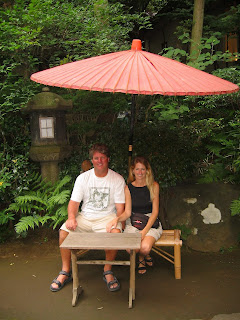
Wakayama
We headed for Wakayama Marina City in the Inland Sea,
knowing that here was a decent marina where we could
leave the boat for an overnight visit to Kyoto by
train, while avoiding the additional roundtrip sailing
required to go all the way into Osaka or Kobe. Our
detailed charts are older and when I plotted the
location of the marina and the coordinates placed the
marina deep into the bay south of Wakayama city, I
concluded that either the GPS coordinates were
inaccurate or that significant building had occured
since our charts were printed. With the help of a
brochure of the marinas of Japan we cross checked the
GPS coordinates, and an aerial photograph helped us
locate the entrance outside a newly created island.
We made our way in and tied alongside.
Our first day there was gorgeous and sunny. We had
great facilities there, so were easily able to do our
laundry, enjoy long hot showers and fill our water
tanks. And we contacted people in the area that we
knew. Japanese cruisers who we first met in New
Zealand had settled here after they finished their
circumnavigation of the Pacific, and we thought it
would be fun to see them again if we could arrange it.
We were able to reach Yuki immediately on the weekend
and she visited the boat, bringing fresh vegetables
from her garden. We spent some time aboard catching
up with what we'd been doing since we last saw each
other. Then she took us to see the Wakayama Castle,
which I'd really been wanting to see. The castle
towered over the city behind a fortress of stone
walls, yet inside, the building seemed far less
imposing.
I had been completely enthralled with James Clavell's
book Shogun and subsequent miniseries as a child, and
I really loved being able to see various types of
traditional warrior dress on display inside.
The view
from the castle peak overlooking the city and marina
was excellent and the weather was clear. After
touring the castle and gardens, we headed for a
grocery store where Yuki helped us to provision for
our upcoming passage. Yuki's help was invaluable: We
appreciated having her tell us what things were and to
suggest ingredients that could last for months without
refridgeration for easy to cook meals while underway.
We got so absorbed in provision shopping, we nearly
forgot to buy the octopus for the evening's meal!
Then we headed for her house, where we met up with her
husband, Tomi, a talented artist and musician. We
were amazed by Tomi's watercolors and sketches of so
many places we've cruised and loved thumbing through
his sketchbook and their book of cruising friends,
many of whom we had met while crossing the Pacific.
We had a great time with them, reminiscing about
boats, people and places we knew in common. Yuki and
Tomi told us that a Japanese singlehander that we met
in Saipan last April failed to arrive in Japan: About
a month after we saw him depart, his boat was found
adrift off the coast of Japan with no one on board and
we realize that we might have been the last people who
saw him. A circumnavigator friend of theirs also
joined us and we were amazed to hear of his passages
around cape horn and across the Atlantic and Pacific.
For dinner we had takoyaki, a specialty of the area,
which are tiny round balls of soft doughy like mixture
of octopus, flour and a mild cheese, which were
absolutely delicious! We also had a great salad and
pot stickers to round out a fantastic evening.
Kyoto
Early the next morning, Yuki and Tomi generously took
us to the train station and helped us get our tickets
for Kyoto. It was raining pretty steadily so we were
suited up in our rain gear along with umbrellas hoping
the trip wouldn't be a total washout. The train took
about an hour and a half and after we arrived we
immediately headed for the tourist office to find a
place to stay for the night. We identified a Japanese
traditional inn, a Ryukan, that suited our needs in
the area of Gion, where the old teahouses and geisha
are concentrated. Then we found a restaurant in the
impressively huge modern Kyoto station that looked
appealing and affordable and joined the queue outside
on the bench. An engaging waiter/host took everyone's
order while we waited. As the only Gaijin, we went
through the pantomime, trundled over to the window
display and pointed at the meals we wanted. And
shortly after we were seated our meals arrived, a
combination of noodle soup, rice, tempura, salad and
pickled vegetables and seaweed, served along with
plenty of hot green tea. After lunch we wandered
amidst the steady drizzle over to a temple near the
station then made our way to the Ryukan to check into
our (hotel) room.
Our room featured traditional
features of a Japanese home: the step up from the
entryway into the main living area, with tatami mats
covering the floors. The room was sparsely decorated
with just a low table in the center of the room and
low flat cushions placed around it, and a television
an alcove in the far corner. We snacked for dinner
while hotel staff came in to make up our bed: They
slid the shoju screen doors open and pulled four
single futons out of the closet and laid them out in 2
layers side by side. Then they covered the top two
futons with flat sheets tucked between the futon
layers and on top they laid a covered duvet and
pillows. We found the futons to be very comfortable
after we wandered the streets of Gion a bit during a
break in the heavy rain.
In the morning with better weather, we again wandered
the cobblestone streets of Gion, lined with charming
wooden tea houses and weeping willows.
As we stopped
to buy a drink from a vending machine, a woman asked
us where we were from and how long we were staying.
When we indicated we were heading towards a temple,
she indicated she'd show us the way. Soon she was
pointing out famous tea houses in her limited English
and patiently waiting while we took photos of the
kimono clad women and interesting scenes we
encountered along the way. When we arrived at the
temple she hurried up the steps and bought 3 tickets
and ushered us inside refusing to hear our
protestations as we tried to pay our own way. We
looked around the temple briefly then she invited us
to sit with her in a peaceful spot overlooking the
gardens. We were impressed with the beauty and
peacefulness of the temple and talked for a short
while as best we could given our language challenges.
She began pulling items out of her bag and handing
them to us, saying "gift for you": first a book
showing her company that supplies very high quality
miso to fine restaurants, a temple book, a cell phone
charm, a special temple cloth, then beautiful photos
of geisha in training, called maiko, and full fledged
geisha, (called geiko in Kyoto). In her limited
English, she explained a little about the geisha
training using the photos to point out what she meant.
I was keenly interested in learning more about this
uniquely Japanese tradition that I read about in the
book "Memoirs of a Geisha". She promised she'd take
us to see the geishas after the temple. Then we
continued to explore the temple and its lovely
gardens. The presence and manner of our self
appointed host made us stop and really immerse
ourselves in the serene beauty of the temple in a way
that we might not have otherwise.
And when we
finished, we all made our way back through the cobbled
streets.
As we rounded one corner, we saw a large group of
photographers hovering outside a doorway, clearly
waiting for something. Our host greeted friends in the
crowd and then asked if we liked noodles, whisked us
into a noodle shop and promptly ordered. When the
shopowner placed in front of each of us a bowl of cold
noodles, a bowl with small bits of raw seaweed, a bowl
of brown sauce, and a bowl with a white gruel topped
with a raw egg. We watched her mix everything else
together and then pour the mixture over the cold soba
(buckwheat) noodles and start eating. So we both took
a big breath and followed suit, trying to forget that
we were eating raw eggs and we weren't sure what else.
Surprisingly enough we found the combintation quite
filling and not revolting. (We've noticed that eggs
are a common feature in Japanese meals, though usually
cooked.) We were able to treat our host to lunch and
then we joined the crowd of paparazzi outside.
As we awaited the debut of a newly graduated geisha we
learned from an American gal with a good understanding
of Japanese a bit more about geisha traditions: A
maiko begins her training at 15, mostly running
errands and observing in plain dress, then at 16 the
maiko begins to dress in elaborate kimono and
hairstyles and ornaments, studying the traditional
arts - singing, dancing, shamisen playing, flower
arranging, etc.
When a maiko reaches the age of 20,
she becomes a full fledged Geisha, assuming the full
duties of a geisha, keeping the lion's share of the
income that she generates and usually moving out of
the shared geisha house and into her own quarters.
The geisha, being more skilled in the fine arts than
the maiko, tend to dress more plainly once they make
the transition, with less brightly colored kimono and
less flashy hairstyles (usually wigs) and ornaments.
She is considered an artist and not a prostitute. On
this lucky day, we saw the debut of a new geisha as
she emerged from her geisha house to begin her career
as a full fledged geisha.
When she came out in her
formal black kimono, white face and elaborate
hairstyle, the photographers went wild, taking
photographs of her from every angle. They paid
special attention to the 3 (makeup-less) stripes of
bare skin on the back of her neck, considered very
sexy as they suggestively disappear into her kimono.
On this day, the geisha makes her rounds to all the
tea houses for the first time as a full fledge geisha.
As she began her tour, the photographers followed in
a pack. We took this opportunity to say goodbyes to
our host and thank her for her incredible generosity.
Though we only had a couple of hours until our train
returned to Wakayama, we wanted to fit in a quick tour
of Naji-ji, the castle of the first Tokugawa
Shogunate. Its ostentatious style signalled the
decline of the power of the emperor and the rise in
that of the shogun. To protect the shogun against
treachery, the castle featured hidden compartments for
bodyguards to keep watch and nightingale floors that
sang pleasantly when someone approached.
The castle
was surrounded by a moat and high stone walls and
beautiful gardens filled with ponds and waterfalls
amidst lush flowers and trees. The castle interior,
while filled with finely carved shoji screen doors and
paintings is surprisingly sparse and plain: similar in
appearance to typical tatami rooms, yet made with much
higher quality materials. The elaborate entrance
gates and gardens were the most impressive features,
as well as the clever chirping floors. I could have
definitely been comfortable living there, just with a
bit more furniture!
With so much still to see in Kyoto, the rapidly
approaching typhoon season forced us to press on with
our sailing journey, and we returned to the boat in
Wakayama.
Nachi:
The day after we returned from Kyoto, we carried on
with our sailing. We've been moving at a pretty quick
pace, rarely stopping to do more than sleep and
sightsee. We headed out in foggy light wind
conditions amidst busy shipping traffic yet again.
With so much practice, we're quite adept at
recognizing all the various lighting combinations from
every angle for all types of ships - vessel on port or
starboard, LPG carrier, vessel restricted in its
ability to maneuver, vessel not under command,
submarine, etc. and determining the location of a ship
based on its engine noise or fog horn when visibility
is poor. Our next intended port was Japan's largest
tuna fishing port and whaling center on the southern
coast of Honshu, where natural hot springs or onsen
are common due to the volcanic activity in the area.
We pulled into this shipping port and tied alongside a
fishing pier, just behind a brand new local sailboat.
We were looking forward to spending time with them but
they were gone within a couple of hours. We ate a
quick lunch and took a nap, then in the evening we
wandered about, spotting an onsen for bathing our
feet, where a small group of Japanese were gathered.
To our delight, we noticed foot baths sprinkled around
town and made a point of soaking our feet as often as
practical.
In the morning we went to see the tallest waterfall in
Japan, nestled up in the mountains nearby. We caught
a train and bus up the winding mountain roads to the
spectacular shrine complex and waterfall.
We had a
delightful day hiking along the ancient moss covered
stone trails through the deep woods to the waterfall
and back down again.
In the late afternoon, hot and
sweaty, we headed for an onsen in the nearby Ryukyan.
After a thorough scrub, we each soaked in the hot tub
outside in the garden - Garth with a couple of
Japanese guys in the men's Onsen while Wendy enjoyed
the solitude of an empty ladies Onsen. We finished
our brief visit with a fine sushi dinner at the local
sushi hangout, with plenty of maguro (tuna) from the
local catch. We would have loved to have paid a visit
to the whaling center and museum, but again the coming
typhoon season urged us on. We noted with interest
all the important Japanese whaling research that we've
witnessed: the parts of the whale depicted in several
butcher's shops. We would have loved to have seen a
nearby whale museum and whaling ship, as well as
sample a few more onsen, one of which was outside
overlooking a gorgeous view and closed when we wanted
to go. But the seasons forced us to press on.
So we sailed eastward towards Tokyo, more drifting in
fog and heavy shipping traffic. We'd planned to stop
one more place along the southern Japanese coast, but
for several hours we had ideal winds that were
starting to build and we though that with this
favorable wind we could easily make good progress and
that we ought to take this rare opportunity. But the
wind was just a tease. Within an hour of double
reefing the main, we instantly had not a breath of
air, too late of course to change our course for the
anchorage we had mistakenly passed up, where we could
have relaxed for the night and done a little more
sightseeing. Instead, the next 18 hours were
painfully slow until we finally motored our way out of
the busy shipping area in poor visibility. Again our
brochures with the marina overviews came in handy to
navigate into another brand new marina in Yokohama,
just south of Tokyo. By the time we arrived our
Japanese flags was in tatters, though I can hardly
remember wind that might have caused that!
Tokyo:
We again splurged to stay in a fancy marina, though we
paid a small fraction of what Japanese boaters might
pay. We wouldn't be able to afford to visit Japan
otherwise, as we typically don't stay in marinas but
often must here. In Tokyo, free anchorages are
nonexistent and we wanted to be able to top up our
water tanks, wash the boat, and have a place where we
could leave the boat and take advantage of easy
transportation to sightsee and meet up with friends in
the area. During our first couple of days in the
marina we'd worked hard to complete the projects on
our list so that we could then enjoy the company of
friends. For years we've stayed in touch with Tomoko,
a freelancer with a Japanese glossy sailing magazine
after she interviewed us in New Zealand, did a 6 page
piece on us years ago and generously enabled us to
participate more fully in the America's Cup by hosting
us aboard the press boat several times, as well as
gave us the opportunity to watch races and press
conferences anytime in the media center. We were
looking forward to seeing her and her husband,
Yuichiro, again and the magazine (Kazi) wanted to do
another interview with us so we arranged a time to
meet just before we planned to depart. In the
interim, we contacted a couple of other folks and made
arrangements to meet up. We misunderstood an
invitation for the weekend to be just an invitation
for dinner and accidentally double booked ourselves.
Unfortunately this misunderstanding messed up our only
opportunity to see Tanaka-san again before he headed
to the Pacific NW to cruise the Queen Charlotte
Islands and we were disappointed to miss him. We hope
we'll have the opportunity to host him in the Pacific
NW sometime.
So we headed downtown Tokyo on the train to meet up
with our friend Mitch, and he generously offered us
the chance to enjoy a few days away from the worries
of the boat, enjoy his huge house in downtown Tokyo,
relax and sightsee with his family for the weekend.
We began our evening in a busy, stand up style food
bar, where we could sample a wide variety of Japanese
delicacies, in the tapas style. In the company of
Mitch, another American and a South African who were
also longtime residents of Japan, we chatted about all
kinds of things while we tried a number of interesting
dishes. We started out snacking on soy beans fresh
out of the pod while we drank beers. Then we moved
inside to the bar and sampled a couple platters of
maguro sashimi (raw tuna) rolled in black sesame seeds
and chicken skewers with a delicious spicy pepper
relish. Then we were served a large bowl of ice, on
which sat juicy slices of fresh beefsteak tomatoes and
the largest asapargus speers that I've seen,
accompanied by a soy bean mixture and mayonnaise which
made for a surprisingly delicious compliment. Then we
tried horse sashimi (yes raw horse!), unusual to try
but not especially interesting. After we polished off
a few beers, Mitch opened up a bottle of shojyu (a
smooth sake like drink of much higher proof) that the
restaurant had given him to congratulate him on his
new promotion.
We poured the shojyu over a carefully
hand carved large round ice cube. (Garth really
enjoyed the the shojyu, perhaps a little too much, as
the next morning he was a hurting pup.) Following our
food sampling, we toured a couple bars housing an
incredible collection of LP record albums of old
favorites and rarities. Soon it was four in the
morning and we took a taxi home to Mitch's nice house
for some sleep.
In the morning when we finally got moving, after a
long hot bath, we headed out for a bit of sightseeing
around Tokyo.
Mitch, his wife Yoshiko and his two
boys, Cody and Kinan, took us to a beautiful garden
where we saw numerous weddings in process - lots of
formal black kimonos - and to a tea ceremony where we
sampled bitter thick green tea and several sweets
designed to complement the tea, one a chalky pink, one
translucent gelatinous pale blue-green and a white
cake filled with a bean paste, all served by a
graceful, kimono-clad older woman.
We marvelled at
numerous carefully cultivated bonsai trees that were
only a few feet tall despite being hundreds of years
old. Ah, the history they must have witnessed. We
carried on to see the Tokyo tower, where countless
people wore kimonos or the more casual, thinner cotton
version - yukata, since those wearing kimono get in
free, but the hazy weather discouraged us from going
to the top. We walked a short distance to Zojo-ji,
the former family temple of the Tokugawas. There we
watched the monks conduct a service in the temple. In
a larger temple opera music was audible and we went
over to watch and listen as performers practiced for
an evening performance. We wrote our wishes on a
bright green tag to post on a weeping willow tree, in
keeping with temple tradition. In the evening we went
to an all you can eat restaurant where we cooked our
own meat, seafood and vegetables in a deep fryer.
After dinner we walked around the busiest intersection
in the world, where nearly 400,000 people a day cross
the street - that's about 1000 people each light cycle
and about how many people we crossed the street with.
There lies a famous statue of Hachiko, in honor of a
famous dog who loyally awaited his masters return
every day at the railway station for 10 years after
his master died in his office. The next day we had a
full day of exploring Enoshima island, shrine and
gardens, a great beach town and day trip from Tokyo,
where we had the opportunity to shop for souvenirs and
sample more Japanese delicacies. (My favorite was a
deep fried bread with a light cheese and fish filling,
slightly similar to takoyaki, but not quite the same.
I can't remember what it was called, though.)
We
finished the day touring Velella and the marina.
After interviewing with Kazi magazine, Tomoko and
Yuichiro took us sightseeing. We drove down to
Kamakura, once the Japanese capital and a charming
town of notable Buddhist temples and Shinto shrines,
and picturesque gardens. We visited an ancient giant
Buddha, built in 1252. The statue sits over 36 feet
tall out in a courtyard after the huge hall that once
housed it was washed away in a typhoon in 1495. We
ventured inside the bronze Buddha and immediately
understood the need for the ventilation provided by
the amusingly large doors cut into his back. A short
distance away, we visited a temple and gardens filled
with blue and pink hydrangea blossoms. We toured
through a cave that resembled an ancient Christian
grotto, with carved statues of gods and goddesses. We
stopped for afternoon tea and Tomoko and Yuichi
treated us to some new Japanese snacks, which Yuichi
ordered and paid for through a vending machine before
handing the receipts to a waiter. Our first snack was
skewers of small white rice balls coated with a mildly
sweet and sticky brown sauce with a vaguely soy flavor
- chewey but delicious. Our second snack was a bowl
of watery gelatin with wide translucent noodles made
of a root vegetable that tested our ability to use
chopsticks as we tried to fish them out of the bowl to
dip into a bowl of molasses sauce. Another one of the
interesting but unusual snacks we've tried here in
Japan. Yuichi then took us to his parents home, where
we got to meet his parents and see their finely
sculpted garden and collection of antiques. They
showed us these amazing cloth figurines that his
mother makes by hand with incredibly fine skill. They
generously sent us away with some impressive gifts
that we will treasure for years. The generosity of
the Japanese people has truly amazed us. I can't
think of a country in our travels where we have been
better welcomed and hosted. The tradition of gift
giving is a natural part of life in Japan and has so
enriched our cruising experience, enabling us to meet
people, sample many things and return with more
souvenirs than we might otherwise be able to. We
finished the day with a sushi feast, tasting a variety
of new types. Japan has truly been a favorite
cruising spot for us and we wish that the season
wasn't such a short one. But typhoon season is here
and it's time to find get out of their path.
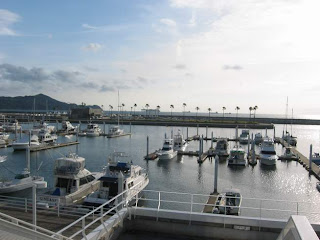








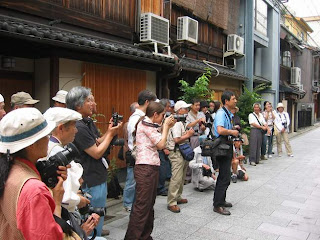

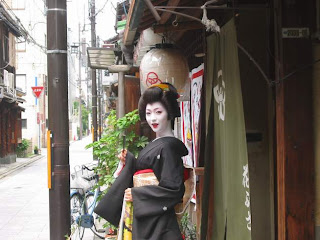

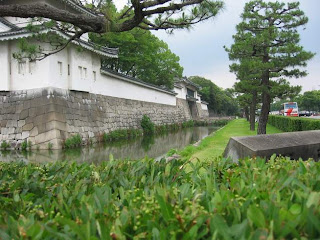
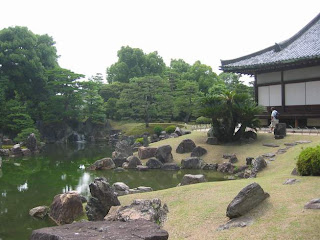
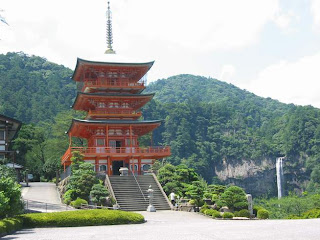

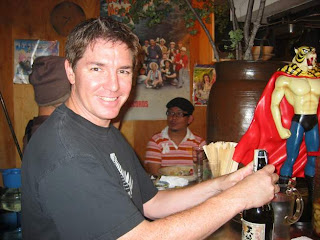




<< Home